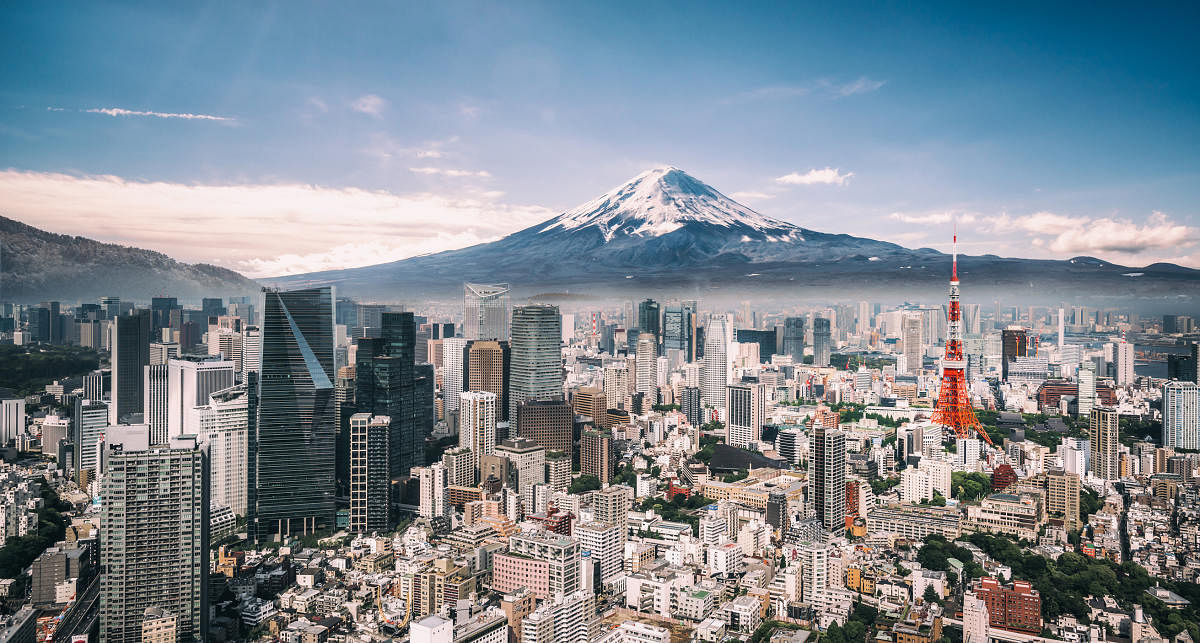
Have you tasted sushi? There are several, rather good, Japanese restaurants across India and the go-to dish for most people who visit them, is sushi. So, what is it? It’s usually a piece of raw fish wrapped in a thin coat of rice. And not to forget the wasabi sauce — do remember that wasabi is nowhere near as innocent as it looks. The tiniest grain will make you reach for a gallon of water, though actually it feels like it’s hit your nose rather than your tongue.
For many of us, sushi and wasabi are the closest we’ve gotten to the 4 main islands and the nearly 7000 tiny ones that make up Japan. Being an island nation, tucked away from the greater part of the world, Japan has an aura of exoticism and mystery.
Tokyo is the metropolis with the greatest number of people in the world and an urban economy that is second only to New York’s. This city was originally a little fishing village called Edo. It was during the time of the Tokugawa Shogunate that it began to become big and prosperous. The town became the centre of power and culture.
The Shoguns were military leaders who were supposedly appointed by the emperor but were actually the real rulers of the nation. Their rule was a period of peace and prosperity in the nation. By the mid-18th century, Edo had become a huge city. In the 19th century, when the 700-year Shogunate period came to an end, the emperor moved his palace to Edo and the city was renamed Tokyo meaning ‘Eastern capital’. Today, Japan is a constitutional monarchy where the emperor is mostly a figurehead with a largely ceremonial role.
When you think of Tokyo, you often think of skyscrapers and bright lights; but you also think of the pretty, pink cherry blossom (Sakura) that blooms around April. Both the blossoms and the leaves can be eaten and are used in traditional sweets and teas. You don’t just slurp tea down in Japan. There’s a whole graceful ceremony involved that makes a point of emphasising the calm that a lovely, aromatic brew should give.
Tokyo is a glorious blend of the traditional — tea ceremonies, historic temples and beautiful, tree lined avenues — and the modern — a hotel and a restaurant run entirely by robots (multilingual ones!), and the world’s tallest tower (that’s The Tokyo Sky Tree at 2080 feet). It’s a city that’s home to several of the world’s Fortune 500 companies.
Over 10% of the total population of Japan lives in Tokyo — this leads to crowded trains and high rents and makes management of disasters (fire, earthquakes) more difficult. Luckily, the Japanese are one of the most disciplined people in the world which makes things a wee bit easier when a natural disaster happens. Remember those images of the recent football World Cup where the Japanese were famously seen cleaning up stadiums and locker rooms after their matches? Japan as a whole is an earthquake prone country. Buildings are built to stand strong but disasters have been known to occur.
The crime rate is very low so visitors can roam the city safely. Although the transport system is very efficient, overcrowding is inevitable. So much so that Tokyo has official ‘oshiya’ (Pushers) whose job is to push and pack commuters into the trains. Indeed, the world’s busiest traffic intersection, the Shibuya crossing is considered a sight. Traffic coming from seven different directions stop as the lights turn red and about 2,500 people cross the road. (We could do with a system like this in Bengaluru!) The local people call this ‘the incredible scramble’.
Foreigners get to do tax-free shopping in Tokyo. Weirdly, but most conveniently, you can buy almost anything from a vending machine too, which, when you consider that few people speak English, makes it convenient to do your essential shopping. There’s even a ‘mystery’ vending machine for those who like surprises.
However, Tokyo is home to the greatest number of Michelin starred restaurants in the world. So, on your first visit there, greet your host with a bow and begin with the sushi.
(The author is a writer and a soft skills and communications trainer.)